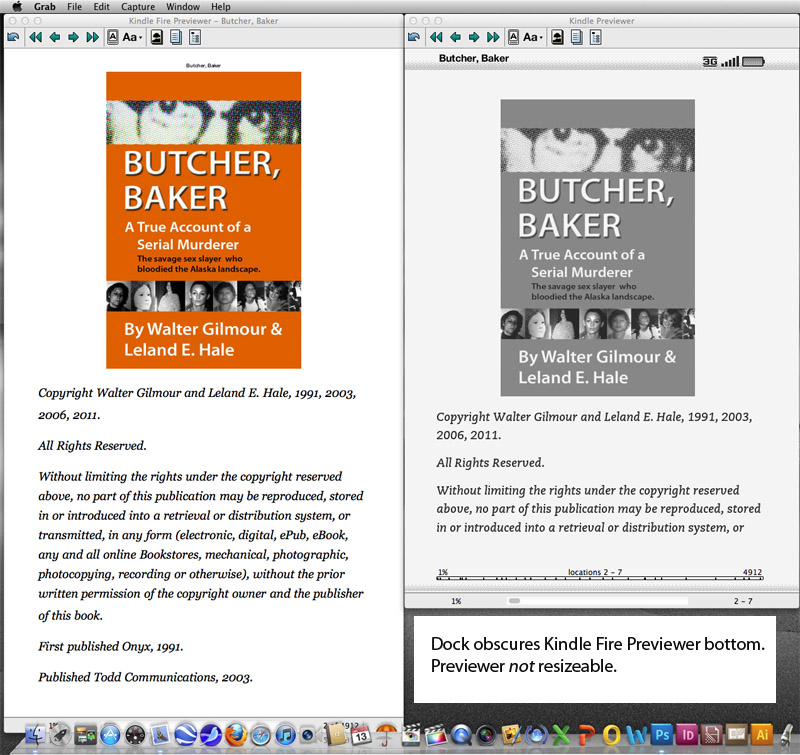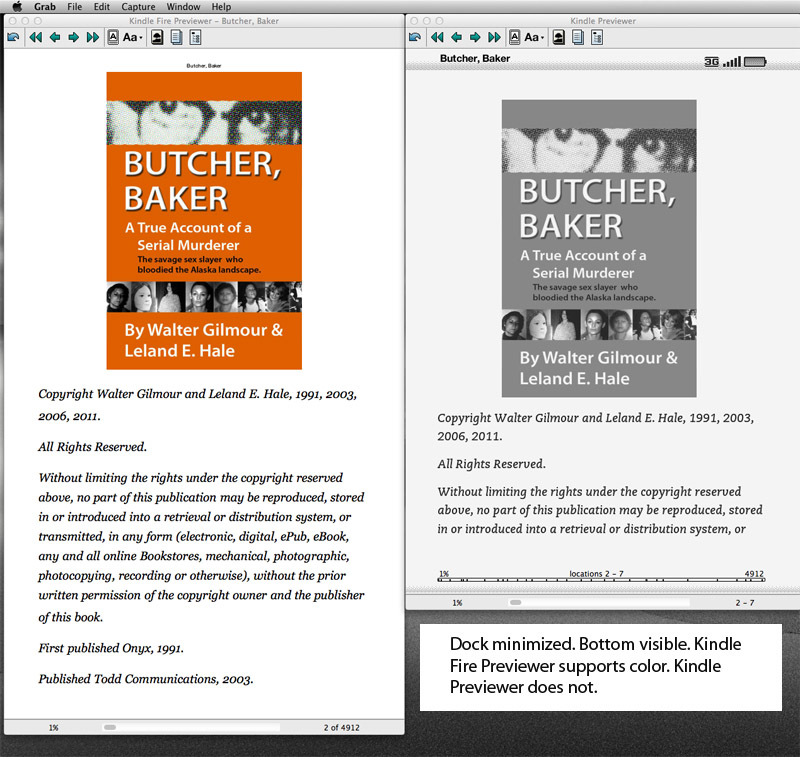Amazon has just released an updated version of its Kindle eBook creation toolset. Let it be said, it’s a grand accomplishment. KF8 adds over 150 new formatting capabilities, including drop caps, numbered lists, fixed layouts, nested tables, callouts, sidebars and Scalable Vector Graphics. And, as Amazon notes:
Kindle Fire is the first Kindle device to support KF8 – in the coming months KF8 will be rolled out to our latest generation Kindle e-ink devices as well as our free Kindle reading apps.
Amazon simultaneously released an updated version of its Kindle Previewer, the app that lets content creators preview their Kindle-compatible eBook files.
In this installment, I’ll focus on the updates to the Kindle Previewer. The KF8 review awaits more in-depth experience with the tool (it’s still command-line, but Amazon supports epub to mobi conversion through current and previous versions of the Previewer app).
KINDLE FIRE PREVIEWER (FIRST IMPRESSIONS)
Pros:
- Supports color. The Kindle Fire Previewer supports color. The Kindle Previewer does not; if your ePub targets multiple platforms, and color is part of the mix, you’re in a bit of a bind with the old Previewer. Kindle Fire Previewer fixes that.
- Renders text more faithfully. The Kindle Previewer has inconsistent text rendering, making it hard to tell whether it’s your file or the Previewer that has the problem. Kindle Fire Previewer fixes that.
- Converts epub to mobi and KF8. This is the whole point of the new toolset, so this is a no duh.
Cons:
- Previewer Window too long. The Kindle Fire Previewer app window is taller than its predecessor, because the Fire is, well, taller. There’s more on the page. On the Mac, though, that means that the bottom of the app window is obscured by the Dock.
- App Window not resizable. This is a carry over from the older Kindle Previewer. But the default height of the old Previewer was less, because Kindle e-ink devices are smaller, so the obscuring the dock problem was not evident. Bottom line: you can’t fix this problem except by minimizing the Dock.
- NOTE: All tests were conducted at a screen resolution of 1920 x 1200. We get it that the fixed size on the Previewer is a proxy for what the eBook will look like on various Kindles. But something got lost in translation. The Kindle Fire has a resolution of 1024 x 600. Come on; it should fit with room to spare.
Kindle Previewer With Dock

Kindle Previewer Without Dock

I just read your book on Robert Hansen. There are two spots I have difficulty with. One place you describe Black Bears as rare on the Kenai Peninsula. Black bears in Alaska are not at all rare. In another spot talking about the divers searching the Knik river below the Rail Road Bridge. You say the water was clear. The Knik River is always glacial silt gray–just like Cook Inlet.
Hey Lance
Thanks so much for your keen eye! We are close to re-releasing “Butcher, Baker” as an e-book, so now is the time to correct any errors. You may have saved us considerable heartache!
Your comment about the Knik River being clear is, I believe, taken from the following passage in “Butcher, Baker.”
That information was taken directly from an AST report on the dive, so I am not in a position to contradict it. Having just accompanied a more recent dive team (to Finger Lake, near Wasilla), I observed conditions similar to that described in the book. Silty bottom, clear water above. Yes, I know, rivers are quite different than lakes. What I’m suggesting is that, on the day the dive team took to the Knik, they found conditions as they described. In fact, it is my experience that they awaited just such conditions.
As for the black bear citation, I’m going to have to conduct more research… Again, my sense is that this is reporting that came from AST. Not that they’re always correct! I’ll get on that one and, again, thanks Lance!